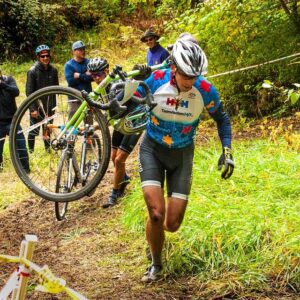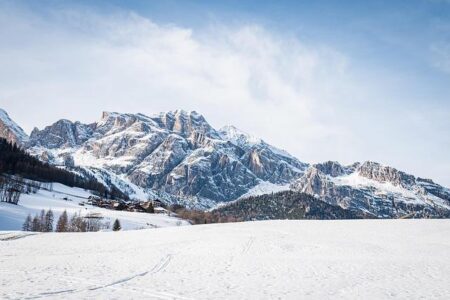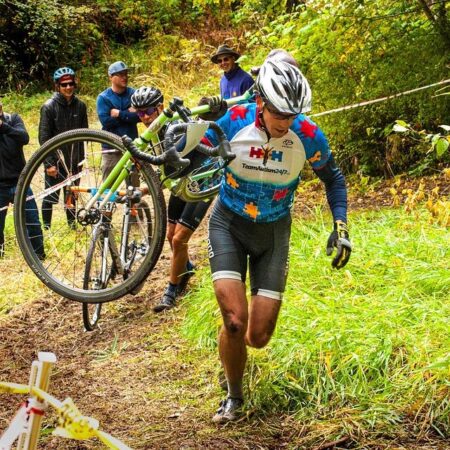Chasing Tadej PogaÄŤar: A Glimpse into the Life of Covering Cycling’s Dominant Force
In the world of professional cycling, few names resonate with the same level of awe and admiration as Tadej PogaÄŤar. The young Slovenian prodigy has redefined standards of excellence, showcasing unparalleled skill, relentless determination, and an amiable personality that has captivated fans and analysts alike. As he continues to dominate the peloton, paving his path to cycling immortality with victories in prestigious races like the Tour de France, the challenge of covering PogaÄŤar has become a unique and exhilarating experience for journalists. This article delves into the intricacies of reporting on a cyclist who is not just competing in races, but is, in many ways, rewriting the narrative of the sport itself. From capturing the tension of pivotal moments in his races to the nuances of his training regimen, we explore what it truly means to chase Tadej PogaÄŤar-both on the road and in the ever-competitive realm of sports journalism.
Inside the Press Room: Navigating the Challenges of Covering Tadej PogaÄŤar’s Unmatched Dominance
Covering the rise of Tadej PogaÄŤar necessitates a keen understanding of not just the racing strategies and technical details, but also the emotional tapestry that underpins his exploits on the road. Journalists find themselves navigating through a range of daily challenges, from keeping pace with his evolving strategies to uncovering the personal story behind the athlete’s unwavering focus and ambition. The obsession with detail has become paramount, as fans crave insights beyond mere statistics, looking for intangible elements that contribute to his historic wins. In a sport where every second counts, the press room buzzes with anticipation and speculation, leading to discussions that often venture into the philosophical. Each race is a new chapter, and the quest for a unique angle has become an exhilarating yet daunting task for the press corps.
As the narrative unfolds, journalists must also tackle the logistical challenges of the cycling circuit, which demands rapid adaptability to various race conditions and media schedules. This involves:
- Complex Travel Arrangements: Covering races across diverse terrains and time zones can feel like a race in itself.
- Access Issues: Securing interviews and exclusive behind-the-scenes content requires persistence and optimal timing.
- Real-time Reporting: The need for immediate updates during races means journalists must be on high alert and ready to relay developments as they occur.
In response to these challenges, some media outlets have adopted a structured approach to streamline their coverage. The following table outlines commonly utilized resources and strategies that enhance the storytelling process:
| Resource | Purpose |
|---|---|
| Social Media Monitoring Tools | To gauge public sentiment and real-time reactions during races. |
| Press Conferences | To extract insights directly from PogaÄŤar and his team. |
| Data Analytics Software | To analyze race statistics and performance trends. |
Behind the Scenes: The Dynamics of Reporting on Cycling’s Rising Star
Covering Tadej PogaÄŤar has transformed from mere reporting to an intricate dance of capturing the raw thrill of cycling as it unfolds. Each race presents the opportunity to chronicle a remarkable talent who seems to defy the limits of human endurance. Journalists find themselves immersed in the atmosphere of competitive cycling, navigating through a labyrinth of team dynamics, strategy discussions, and the palpable tension that precedes each race. The challenge lies not only in reporting the results but also in conveying the emotions that ripple through the crowd as PogaÄŤar crosses the finish line, often accompanied by the overwhelming roar of exuberant fans celebrating yet another victory. The job demands an acute sense of timing, keen observational skills, and an unwavering commitment to the story behind the statistics.
Behind the scenes, the media fraternity operates in a world driven by fast-paced communication, where every second counts. Key elements include:
- Interviews – Gaining insights from the athlete and his team helps flesh out the narrative.
- Anecdotal Evidence – Gathering stories from spectators and fellow competitors adds depth to the coverage.
- Real-Time Updates – Utilizing social media to provide instant updates allows followers to feel directly connected to the action.
Understanding the complexities of cycling, from team tactics to the psychology of competition, is essential for accurate reporting. Journalists meticulously compile data and statistics to create comprehensive analyses of PogaÄŤar’s performance, often utilizing visual tables and infographics to illustrate trends over time. Here’s a glimpse into recent race statistics:
| Race | Position | Time |
|---|---|---|
| Tour de France 2023 | 1st | 82h 12m |
| Giro d’Italia 2023 | 2nd | 80h 45m |
| La Vuelta 2023 | 1st | 74h 15m |
Capturing the Moment: Essential Tips for Journalists Documenting PogaÄŤar’s Extraordinary Journey
Capturing Tadej PogaÄŤar’s remarkable journey requires a unique blend of skill, intuition, and preparedness. Journalists must be equipped not only with their cameras and notepads, but also a keen understanding of cycling dynamics and PogaÄŤar’s personal narrative. It is essential to stay informed about his training regimen, nutritional routines, and even the psychological aspects that influence his performance. Key tips include:
- Research Extensively: Knowing PogaÄŤar’s background, including his early days and key milestones, provides depth to your coverage.
- Be Present: Attend competitions and training sessions to grasp the atmosphere that surrounds him.
- Engage with Fans: Capture the passion of cycling enthusiasts, as their stories often illustrate PogaÄŤar’s impact beyond the sport.
During races, quick reflexes and a deep understanding of following the action from various vantage points are crucial for real-time reporting. Adjust your technique depending on the phase of the race; for instance, capturing the intensity of a sprint versus the strategic pacing in the mountains requires different approaches. To enhance storytelling, consider using visual aids such as infographics or timelines that chronicle PogaÄŤar’s achievements, keeping them relevant and visually appealing. The following table highlights key victories that define his illustrious career:
| Year | Event | Result |
|---|---|---|
| 2020 | Tour de France | Winner |
| 2021 | Liège-Bastogne-Liège | Winner |
| 2022 | Tour de France | Winner |
Future Outlook
As the dust settles on another exhilarating season of cycling, the challenge of covering Tadej PogaÄŤar-often hailed as the best cyclist of his generation-becomes ever more complex. His dominant performances not only set the standard for excellence in the sport but also create a narrative that demands constant vigilance, professionalism, and a deep understanding of the unique elements that characterize a true champion.
For journalists and fans alike, following PogaÄŤar is an experience rich in anticipation, drama, and inspiration. His ability to redefine the limits of endurance and strategy transforms each race into a spectacle that captivates viewers around the world. As we continue to witness his evolution, it becomes clear that the story of Tadej PogaÄŤar is not just about the races he wins, but also about the impact he has on the sport of cycling itself.
In documenting his journey, we contribute to a broader dialogue about athleticism, competition, and what it means to pursue greatness. With each pedal stroke, PogaÄŤar inspires not just the next generation of cyclists but also those of us tasked with telling his remarkable story. As we look ahead, one can only wonder what new chapters await in the extraordinary saga of Tadej PogaÄŤar-a name that will undoubtedly echo through the annals of cycling history.











